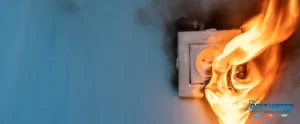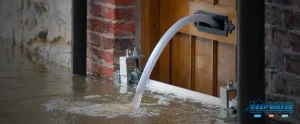While most water leaks can be traced to faulty plumbing, there are those that can be due to rainwater leaking down into your home walls or through a crack in your foundation. If left alone, wall leaks can lead to structural damage and mold growth.
They may not be readily visible, but several signs will help you determine if water has seeped into your home walls and resulted in a leak. Using devices like a water meter can also help you pinpoint the exact location of the leak in your walls.
Signs of Water Leak in the Wall
Although water leakage behind the walls is not visible from the outside, some signs can help you identify them. Below are some of the common ones.
1. Musty Smell
When excess water or moisture is absorbed into building materials, such as wood or drywall, it can produce a musty, humid smell. This is a sign that water is leaking in your wall.
Moreover, the odor can also indicate that molds have grown in the wall cavities. Either way, the issue must be addressed immediately to avoid more serious problems like water damage.
2. Visible Stains
Wall leaks can cause water to seep into the sheet rock, producing a noticeable stain. This will often come out as a discolored area on your wall with no distinct shape and may appear to be more prominent as time passes.
Thick drywall, on the other hand, is known to absorb water almost like a sponge, preventing you from seeing any leak stain on the wall.
3. Mold Appearance
Mold growth is most common in damp areas such as basements, kitchens, and bathrooms. If fungi show up on your walls, it is an indication that there is excess moisture in this part of the house.
Wall-based molds look like a cluster of small black or brown spots. They can lead to allergies and other serious health problems if left untreated.
4. Warping
If the sheet rock located behind your wall gets to absorb too much water, it will bend and curl, causing the wall to warp. Excessive warping can result in structural damage, which can entail costly repairs.
5. Peeled Paint
The paint on your walls will start to peel if there is too much moisture behind them. It usually happens when the sheet rock behind the wall has absorbed water in an excessive amount. It is one of the common signs of water leak in the wall, even as the problem remains hidden. Still, you should be able to locate it by checking for any clear separation in the wall seams.
6. Buckled Ceiling
If water has seeped into your walls, these will end up damaged. This condition can extend to the ceilings and floors. Inspect these areas for any signs of buckling. If you find any, check further for proof of water damage to walls.
7. Wall Puddles
Searching for water puddles that form near a wall is the easiest way to determine if you have leaks in walls. A wet or soiled carpet in one area of your home is also a good sign of water leaking from the wall.
Often, you’ll notice wet spots near water-dependent appliances, such as dishwashers and washing machines. Sometimes, however, these can be seen in the bathroom next to the toilet or the shower area.
8. Dripping Sounds
Detecting water leaks in the walls is possible, even if they are not causing any visible damage. After turning off the water supply, stay quiet and pay close attention. A leaking pipe could produce a faint drip sound in the nearby wall. Plastic PVC pipes in your plumbing will amplify the sound of the drips, making it easier for you to hear them. On the other hand, it won’t be easy to hear a drip if you live in an old house with copper pipes.
9. Changed Texture
Bubble-like textures are likely to form on your walls if they have water leaks. As the water starts to distort the wall paint, it will cause the wall to rip or buckle. If your walls have serious leak problems, they may appear to be curving outwards. These can eventually give way if the water pressure becomes too strong. This is dangerous, so you have to stop water leaks under the walls.
10. Increased Water Consumption
Pay attention to your monthly water bills, as these will show an unusual increase in consumption if there is significant water leakage in your walls. This could lead you to consume more water than usual, yet you cannot figure out why.
While an increase in your water bill charges won’t help you determine where the leak is, it will nevertheless indicate that there could be a leakage in your wall.
Key Takeaway
Leaks in walls are not easy to find. This is because the excess water responsible for the leak is usually hidden from view. Nevertheless, there are signs that you can use as a guide to determine if water leaks have damaged your home wall.
Many of the signs are obvious, like in the case of warped walls and peeled paint. Others, meanwhile, are less clear because they could be indications of a separate and different problem. Examples of these are dripping sounds and increased water charges, which could be due to plumbing issues, and not necessarily because you have a leak in the wall. In both cases, however, a problem has to be resolved before they lead to a disaster like water damage.
Deep Water Emergency Services and Mitigation provides top-notch mitigation services for all water damage.
A major water damage can spring from a small unnoticed leak. Regardless of the extent of damage, you can count on Deep Water Emergency Services and Mitigation to be there and save the day for you.
We have a professional water damage mitigation Dallas team fully capable of handling all forms of water damage. Call us and allow us to help you get your feet back on the ground.






